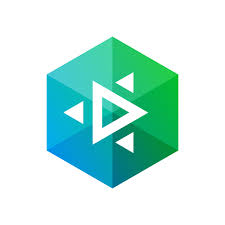What Is Julia Language? Julia represents a programming language which delivers high performance as a solution designed for processing numerical data within scientific analysis and data science applications. Researchers from MIT formed Julia as a programming language in 2012 because they sought a language similar to C but with the ease of use in Python.
The Julia program offers open-source functionality which enables users to both utilize the platform and also update it and add features to its development cycle. The speed-oriented design of Julia as an open-source language makes it an attractive choice for high-performance work environments including financial institutions and scientific and aerospace research fields.
The Question Remains Why Experts Select Julia Instead of Alternative Programming Languages. Business users ask themselves whether they can benefit from continuing to work with Python or R instead. Good question! Numerous developers along with researchers select Julia programming instead due to the following main factors:
🚀 Speed Like C++
Julia was designed for speed. Through its Just-In-Time (JIT) compilation mechanism Julia achieves execution speed that matches Fortran and C. Large-scale simulations and complex mathematical computations together with real-time analytics make Julia a top selection as an ideal solution for these demanding tasks.
🧠 Easy to Learn
Like Python Under its powerful engine Julia maintains a writing and reading platform that is simple to understand. The syntax of Julia caters to beginners and Python users and people familiar with R or MATLAB. Those who understand another professional language will find it simple to learn Julia since its structure flows in a familiar manner.
🔢 Built for Math and Science
Julia executes linear algebra functions and differential equations in addition to solving optimization problems effortlessly. The programming language was made with the goal of delivering a math-like experience for writers instead of typical programming code functions. No more translating complex equations into messy code snippets!
🔄 Seamless Integration
Julia provides access to directly execute C alongside Fortran and Python library functions as one of its primary strength points. The likelihood exists that you can employ a library in another language which you love through Julia.
Where Julia Really Shines The main advantages of Julia programming language include the following features
Data Science and Big Data
The processing speed of Julia enables it to work through enormous datasets at full speed which caters to contemporary data science operations.
Machine Learning and AI
The ML space is witnessing a rapid rise of Julia through its Flux.jl and MLJ.jl package availability.
Scientific Computing
Julia provides the fastest precise options for both physics simulations and climate modeling applications.
Finance and Economics
Quants together with financial analysts choose Julia because of its remarkable capacity to process sophisticated mathematical models.
How to Start Learning Julia
Ready to learn Julia programming? Beginners who wish to learn Julia can follow these steps:
Install Julia
Users can obtain the program through julialang.org.
Try Jupyter Notebooks
Jupyter combines fluently with Julia so programmers can write and execute code through an interactive interface.
Follow Tutorials
A good starting point for beginner Julia learners is to access “JuliaAcademy” resources as well as free YouTube tutorials.
Join the Community
The community of Julia consists of individuals who show great passion and provide helpful support. Several online Julia community discussion platforms include Discourse as well as the r/Julia Reddit group combined with Slack groups.
Final Thoughts: Is Julia the Future?
Julia functions as a specialized instrument through meticulous design to address critical problems that computers face at present.
The study of Julia programming language may enable significant advantage in professions that include data science and engineering as well as finance and scientific research. The language delivers three key benefits of rapid execution alongside adaptable design and user-friendly capabilities to an extent that other languages struggle to achieve.







Leave a Reply